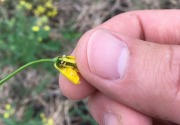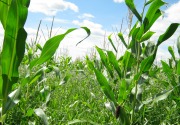| |
| |
 |
| |
 |
|
MMMM d, yyyy |
|
| |
The University of Guelph placed third in the agriculture, dairy and animal science category and fourth in the food and technology ranking of the top agri-food universities in the world. For both categories, U of G was the No. 1 university in Canada, and the only Canadian school to make the “Top 10” lists.
» Read more...
The farmers chosen for this program are working to increase cover crops and decrease tillage, using organic amendments and reducing chemical inputs.
» Read more...
Palmer amaranth can cause yield losses of up to 80 per cent in severely infested soybean fields. It has evolved resistance to six classes of herbicides since its discovery 100 years ago, and now scientists have discovered it has two new tricks up its sleeve.
» Read more...
|
| |
 |
 |
| |
|
| |

Kick some grass with Focus – the easiest, most efficient pre-seed/pre-emergent residual control for corn and soybeans. Focus is an ideal solution to help you fight resistance, maximize yields and protect against a wide range of grassy and broadleaf weeds.
Remove weeds early and enjoy long residual activity, plus excellent crop safety. With effortless handling and application, it’s grass control that’ll make you grin from ear to ear.
>> Learn More |
| |
|
| |
 Swede midge first appeared in canola in Ontario in 2003, and recent extreme populations in northeastern Ontario resulted in the Ontario Canola Growers’ Association (OCGA) strongly recommending in 2015 that producers avoid growing canola for three years across the New Liskeard area in an attempt to suppress swede midge populations.
» Read more...
Swede midge first appeared in canola in Ontario in 2003, and recent extreme populations in northeastern Ontario resulted in the Ontario Canola Growers’ Association (OCGA) strongly recommending in 2015 that producers avoid growing canola for three years across the New Liskeard area in an attempt to suppress swede midge populations.
» Read more... |
| |
 This annual grassy weed was first found in Canada in 2000, when it was discovered in Quebec. Since then, government agencies and producers have been working to prevent the weed from getting out of hand, and researchers have been learning about the weed and its management under Canadian conditions.
» Read more...
This annual grassy weed was first found in Canada in 2000, when it was discovered in Quebec. Since then, government agencies and producers have been working to prevent the weed from getting out of hand, and researchers have been learning about the weed and its management under Canadian conditions.
» Read more... |
| |
 |
 |
| |
|
| |
|
|
| |
| |








